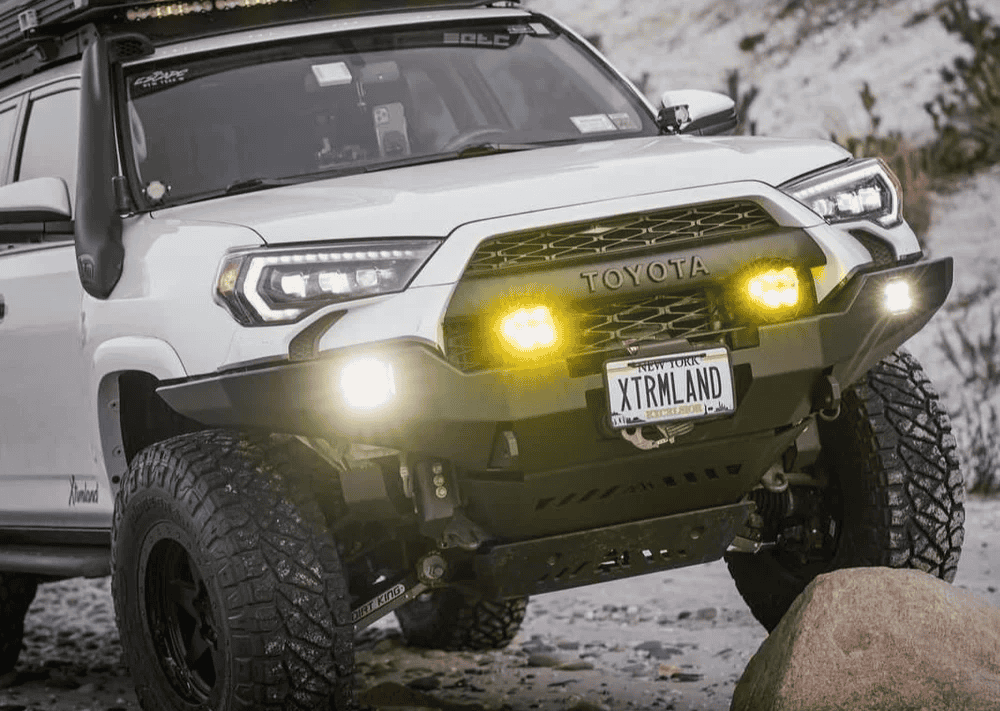Overland Vehicles

A sleeping platform turns an empty cargo bay into a calm, level surface that protects gear and supports your body. Start with constraints you cannot change. Wheel well spacing, rear door opening, and seat placements define the box you are working inside. Record floor to ceiling height, the distance from the back of the front seats to the rear threshold, and the height needed for clear storage under the deck.
Comfort comes from three elements working together. A rigid deck that does not flex, a mattress that suits your sleep posture, and controlled airflow to manage heat and condensation. Weight matters. Keep the platform light enough that it will not stress brakes or suspension, yet stiff enough to distribute load without creaks. Anchor into factory points where possible and avoid drilling into unknown cavities that may hide wiring or fuel lines.
If your travel plans include washboard roads or technical trails, study how complete builds protect cargo and sleeping areas. See how integrated platforms fit within overland rigs and how they handle dust control, tie downs, and power access.
Fixed decks suit long trips where the bed stays ready at all times. They favor strength and deep drawers below. Modular panels break down for daily driving or cargo duty, letting you swap between sleep and haul modes. Foldaway designs hinge or slide to open standing room for dressing and cooking. Drawer based platforms add organization, but they raise the deck height, so confirm you still have headroom to sit up.
Under bed space can be the most valuable real estate in your rig. Consider bin sizes, whether you need a full length pass through for boards, and how often you access recovery gear, kitchen kits, or water. Drawers keep items from shifting and reduce noise. Lids on top of compartments turn the deck into a series of service hatches, making it easy to reach batteries, fuses, or a heater without tearing the bed apart.
Moisture management is non negotiable. Add a breathable layer under the mattress and consider slotted deck panels to allow air to move. Pair insulation with window shades to reduce radiant heat or cold. Choose a mattress that works with your sleep style. Side sleepers need more pressure relief than back sleepers. Test thickness against headroom so you can still sit comfortably.
Material choice shapes strength, weight, and longevity. Hardwood plywood offers a good strength to weight ratio and takes fasteners well. Composite panels resist moisture and can shave pounds, though they require different fastening methods. Aluminum framing creates a strong, serviceable skeleton with removable panels. If you use sheet goods, seal all edges to reduce moisture intrusion and to keep cleaning simple.
Connections matter as much as the deck. Use mechanical fasteners that can be serviced later, and consider threaded inserts where panels attach to a frame. Adhesives and sound damping tapes reduce squeaks where wood meets metal. If the platform spans the van without touching the floor in the center, add ribs or beams to prevent sag. Protect high wear points at the rear threshold with trim or plates to keep gear from chewing into wood.
Layout sets daily rhythm. Decide if you need side access for coolers, water, or cook kits. Think about a cutout or step to ease climbing into bed. Plan cable pathways, heater vents, and a clean route for air to enter and exit the sleeping zone. If you expect to haul bikes or boards inside, keep one long pass through accessible even when the bed is made.
For builds that must integrate with suspension upgrades, exterior racks, or onboard power, a holistic approach saves time. See how a platform ties into a custom overland upfit to keep weight balanced and systems accessible.
Some projects are simple. Others touch critical systems. If your plan involves mounting near seat anchors, routing around airbags, adding a heater, or stacking drawers that support significant weight, an experienced builder brings the right tools and safety practices. Professional shops also design with serviceability in mind so you can reach fuses, filters, and pumps without tearing into the deck.
Look for teams that prototype with accurate measurements, use corrosion resistant fasteners, and secure platforms to factory points whenever possible. Ask about load testing, rattle reduction, and moisture control. The best builds feel silent on rough roads and move as one with the chassis instead of fighting it.
If you want the platform to disappear into a complete travel setup with lighting, climate control, and power management, a purpose built approach delivers results that last. Learn what matters in a shop and process on Why choose OZK Customs.
OZK Customs designs and installs sleeping platforms that match the way you travel. Whether you need a full interior for long range exploration or a targeted upgrade around your bed and storage, our team builds for comfort, quiet, and easy service. From precise cabinetry to metal framing and mounts, every component is cut and fitted for your specific vehicle in Fayetteville Arkansas.
Share your sleep dimensions, storage goals, and the trails you plan to ride. We will design a platform that anchors cleanly, manages moisture, and leaves room for gear and future upgrades. If you are ready to move past trial and error, our crew will build it right and hand it off at our customer lounge so you can hit the road rested. Explore complete rigs for ideas at overland rigs, then reach out to start your build.
Ready for a quiet, solid sleep system that fits your rig and your travel style. Tell us how you camp, what you carry, and the comfort you want. Our team will design and build a platform that anchors safely, maximizes storage, and integrates with electrical or climate systems. Share a few details and we will map your path to better nights on the road.
ADDRESS:
6159 E Huntsville Rd, Fayetteville, AR 72701
PHONE:
(479) 326-9200
EMAIL:
info@ozkvans.com